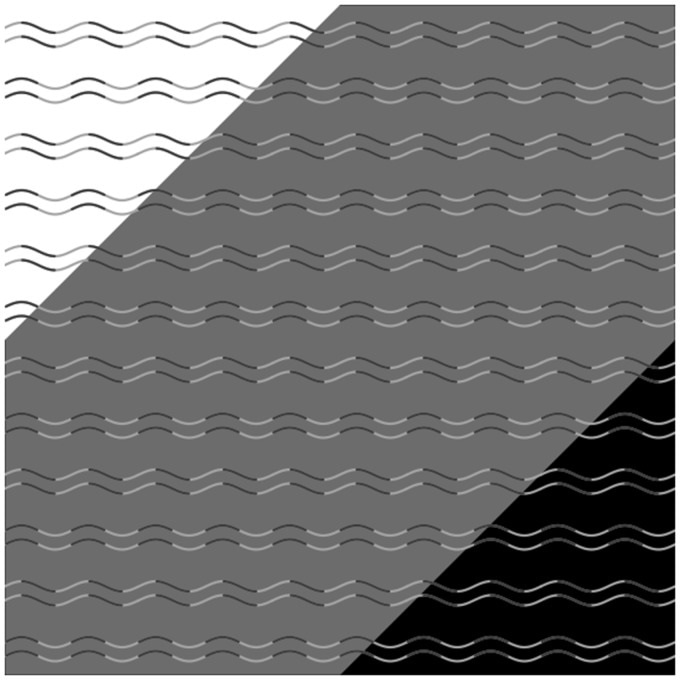There is a new optical illusion doing the rounds all over the internet called the “curvature blindness”. There are a series of parallel lines that are exactly identical but appear curved or angular to the eyes. Kohske Takahashi, an associate professor of experimental psychology at Japan's Chukyo University, analyzed the science behind this illusion and his work titled, “Curvature Blindness Illusion” is published in the latest issue of the journal i-Perception.
An optical illusion is usually a trick to the eyes into seeing something that is not there. The brain here perceives something that is actually not there and interprets it.
Takahashi in his paper writes that this is a “novel illusion – Curvature Blindness Illusion” that has implications on how we perceive curves and corners. He explains that the eyes can be tricked to see the wavy lines as zigzag lines depending on the color schemes of the lines and the background. This image in question has a grey background and the lines appear to be angular and zigzag as the eyes believe there are corners. However the lines are all wavy and there are no angles or corners. Takahashi says that this is a simple but unreported phenomenon. He explains that our brains see corners instead of curves by default and then gets confused. Takahashi writes that the human brain has separate features that identify curved lines and zigzag lines and these mechanisms interfere with each other.

Takahashi included a small sample of eight students who were shown the image and were asked a question – what is seen in the gray, middle section of the picture. Options provided were curved lines, angled lines or both curved and angled lines. Most study participants saw alternate rows of curved and angular zigzag lines when all the lines were actually wavy. He performed three variations of this experiment on the students. Several variations of the illusion were showed to the participants with altered height of the curves and the background color schemes (grey, white or black). He asked them if the lines had different colors at the peaks or at the sides. Experiment 1 looked at the effects of color change, experiment 2 at the effect of the background scheme and experiment 3 assessed which was more important in the illusion – line discontinuity or change of color.
The phenomenon, he reports was seen only when the lines had a gentle curve and when the colors of the lines changed just before and after a peak or valley of each of the curves. The patterns was seen when the background was grey and contrasting with the light and darker tones of the lines. Takahashi says that when the brain is trying to identify both curves and zigzags, the mechanisms work side by side in the brain and perception of the angles takes an upper hand. He wrote, “We propose that the underlying mechanisms for the gentle-curve perception and those of obtuse-corner perception are competing with each other in an imbalanced way and the [perceptions of corners] might be dominant in the visual system.”